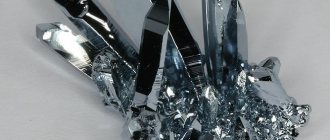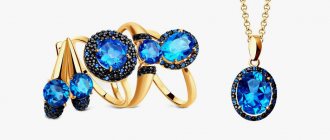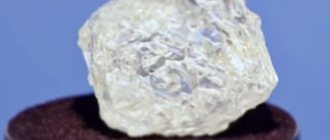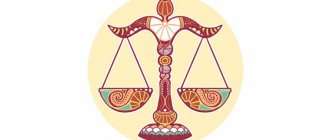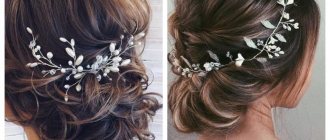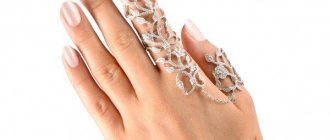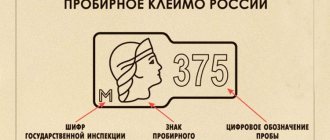Egyptian fashion is a mirror of the cultural and religious values of one of the most ancient civilizations in the world. For many millennia, the ancient Egyptians followed a certain style. As historical sources show, the appearance of clothing remained in their everyday life for a long time: the outfits of the ancient inhabitants of Egypt were distinguished by precise cut and elegant decorative trim.
general characteristics
Jewelry in the Egyptian style still attracts fashionistas with good taste as an irresistible force. Many modern critics in matters of style and fashion admire the perfection and simplicity of Egyptian costumes, coupled with a frame of exquisite decorative elements. The clothing of the Egyptians of Ancient Egypt is thought out to the smallest detail - it is impeccable, there are no unnecessary details. The outfits of this time are not only practical, but also beautiful.
Consisting of various straight lines and geometric shapes, the products were often complemented by accessories that were decisive in the life of the Egyptians: the material, the quality of the finish and the symbol depicted on the Egyptian jewelry served as a kind of passport for its owner. There were whole regulations according to which it was possible to determine whether a person belonged to one class or another.
New Kingdom (XVI-XII centuries BC)
The highest flowering of jewelry art was achieved during the New Kingdom (1580-1085 BC). But, unlike the previous period, social and political "warming" allowed the decoration and variety of types and forms to surpass the jewelry of the Middle Kingdom. During the New Kingdom, Egypt took its place as one of the world powers. Conquests allowed the Egyptians to diversify their appearance, but at the same time class differences reached their maximum. People of high position could afford semi-precious stones and precious metals; poor Egyptians used jewelry from other materials.
The characteristic restraint that prevailed in previous times was replaced by a “thaw”; decorations acquired a lush, sometimes pompous appearance; abundance and excess carried a symbol of ostentatious abundance. The Egyptians' favorite forms of jewelry continue to exist, but their decorative decoration changes. Pendants made of semi-precious stones become more intricate in shape, beads receive a noble polish, filigree is filled with small openwork elements. The motifs of past years, the scarab beetle and the Uraeus snake, remain favorite motifs during the New Kingdom period.
Jewelry from Tutankhamun's tomb
In 1922, archaeologists opened the tomb of Pharaoh Tutankhamun. In addition to the sarcophagus and other interior items, 5 thousand pieces of jewelry were found in it. The dry climate allowed these decorations to remain in their original form and demonstrate to our generation the artistic style of the New Kingdom period. All of Tutankhamun’s decorations indicated that he belonged to a royal person; the drawings and subjects were strictly hierarchical. One of the most famous decorations from Tutankhamun's tomb was the pectoral. The pectoral depicts a winged scarab beetle, made using cloisonné enamel technique and inlaid with lapis lazuli; the thinnest gold partitions are filled with semi-precious stones. In addition, on the pectoral there are symbols of eternal life, the sun, the sacred Uraeus and symbols of Egypt - lotuses. All of Tutankhamun's jewelry found most clearly illustrates the techniques, materials, and typical variety of jewelry from the New Kingdom period. In the tomb were found bracelets-bandages, breast decorations - uskhs, pectorals made of cloisonné enamel, rings made of grain, jewelry of gold and electrum, head decorations with traditional Uraeus, embossed daggers and carved necklaces, beads made of colored stones and ceramics.
Egypt#historical jewels#
- ← Emeralds of the Russian Imperial Court. Secular jewelry
- Modern jewelry in Gothic style →
Egyptian themes in the art of modern jewelers
April 16, 2022 Articles
The Egyptian state, like Egyptian art, still hides many secrets. Decipher until the end...
READ THE MATERIAL
Jewelry making in Ancient Egypt: features of the profession and technology
August 20, 2022 Articles
The Egyptians skillfully used various metals to produce jewelry. The main metal was...
READ THE MATERIAL
Accessories in Ancient Egypt
During this era, jewelry was made from natural materials like stone, wood and minerals. Later they began to add precious stones and metals. The number of expensive components in accessories on a person’s body could determine his status in society. The rulers of Egypt - the pharaohs - hung their bodies with luxurious stones and gold. As sources show, wearing ancient Egyptian jewelry was an honor for both women and men. It was possible to see such accessories not only on living people - quite often the tombs of famous Egyptians were bursting with an abundance of jewelry that found peace along with human mummies. Such amulets included Egyptian jewelry on the neck, chest, head and hands.
Head decorations
For the ancient Egyptians, jewelry was not only a way of decorating and highlighting a social class, but also had a direct totemic character.
Crown with Uraeus
Thus, one of the parts of the body that the Egyptians treated with particular reverence was the middle of the forehead. Many cultures devote all sorts of signs and distinctions to this area: the “third eye,” the Indian tika, the eye of Dangma or Shiva, the tilak or bindi. The Egyptians were no exception, highlighting this particular area of the human body with symbols of will and power, including those indicating a privileged status. The most famous example of this type of jewelry is the Uraeus crown. Another name for Uraeus is Buto or Wadjet snake. Wajit - in Ancient Egypt, the patron goddess of Lower Egypt and the pharaohs as its rulers. The veneration of Wadjet comes from the pharaohs’ confidence that it is she who is the source of royal power, invincibility and protection. In this regard, the image of an Egyptian wearing a crown with Uraeus (a stylized image of Wadjet) is a necessary accessory to the royal costume. The uraeus was worn over a nemesa scarf, and was made using traditional techniques from gold, using enamels or semi-precious stones. Typical Egyptian signs in the form of a scarab, symbols of the god Ra and Egyptian power could be used as decorative decoration. Such Uraeus were found in the tomb of Tutankhamun, Senusret II, and Akhenaten. But for the latter, it was made of metal with properties reminiscent of titanium coated with enamel.
Popular articles Compositions from artificial flowers. 100 photos and ideas. do it yourself for the interiorTiara
During the New Kingdom period, the fashion for wigs entered the costume of the Egyptians. The wigs had very varied shapes, as did the head decorations worn on top. Tiara, crown, hoop and other types of head decorations were made of gold, precious stones and colored enamels. One of the well-known forms of head decorations used for wigs is a “chain mail” type crown, where the smallest plates in the shape of a solar disk spread on top of each other, covering part of the woolen wig with a single piece. The finest detailing speaks of the high craftsmanship of jewelry art of that time. Another form with decorative elements resembles the open wings of a hawk. The detail of the bird, its wings, tail and especially plumage, was always conveyed very realistically, which was technically achieved by stacking gold plates on top of each other, carving in cast gold or cloisonné enamel. Black and white elaboration was achieved by using different shades of gold plates. Tall and voluminous head decorations were worn only by royalty.
Description and meaning of exquisite products of Ancient Egypt
Ancient jewelry was made of precious metals and inlaid with precious or semi-precious stones. These include emerald, lapis lazuli, turquoise, onyx, amethyst and others. The jewelry of that era was distinguished by special symbolism, corresponding to certain divine manifestations on earth.
For example, Udjat - an oblong eye, depicted on tombs to protect the peace of the deceased, symbolized healing and protection of its owner.
The ancient Egyptian Ankh cross symbolized abundance, rebirth and eternal life. Outwardly, it resembles a cross with a ring on top.
Images of animals were no less popular back then. For example, quite often women's jewelry in the Egyptian style is made with the image of a scarab beetle. This insect symbolizes the rising sun and the rebirth of the human soul.
Two crows depicted together are a symbol of marriage and a strong union between lovers. The hawk is a reflection of a free soul. The snake is the wisdom of the ages. A fairly common object in the hands of the pharaohs and gods of Ancient Egypt - a stick with a dog's head and a forked lower end - is a sign of indestructible and holy power.
To this day we can see the decorations of an ancient civilization. Egyptian women wore them almost 3 million years ago. These real evidence of the Egyptian people's passion for decorating their bodies were discovered in the tomb of the legendary Tutankhamun.
Chest decorations
The dry climate of Egypt allowed archaeologists and scientists to obtain a large number of artifacts that are of great interest when analyzing the development of jewelry in Ancient Egypt.
Pectoral
The forehead is not the only place that the Egyptians decorated. The chest was also a sacred place for them, in its global position as the protector of the heart. The primary role of the heart can be easily traced from the entries in the Book of the Dead, where it is called the father and mother of the Egyptian. The most common type of chest decorations were pectorals. The pectorals had a multi-figured and multi-tiered composition similar to the decorative designs on the columns of the temples of the ancient Egyptians. Most of the compositions were built according to the principle of perpendicular projection. The most important symbol depicted on pectorals, which the Egyptians associated with the heart, was the scarab beetle. The scarab was associated with the sun, the trajectory of its movement from west to east is similar to the movement of the sun across the sky. This is the main symbol of rebirth in the afterlife. The motifs depicted on the pectorals have a stable consistency. The god Horus, one of the obligatory ones depicted on the pectorals, is the son of Osiris and Isis. On earth, his embodiment was considered the pharaoh, a symbol of statehood, sky and sun. The lotus is a symbol of Upper and Lower Egypt, the cyclical change of time of day. The boat is Ra's means of transportation across the sky. Not a single amulet in ancient Egypt was complete without a hieroglyph capable of protecting the pharaoh from all diseases and the “evil eye”. Thus, all the images collected on the pectoral, one way or another, reflected the royalty and privilege of its owner. The pectorals were gold, made from prefabricated plates or cast gold. The technique of cloisonne enamel or inlay here receives an unprecedented flourishing. Glass paints or gems were placed between the thinnest gold wires. The body of the scarab beetle was usually made of dark blue enamels or lapis stone. The bodies of Horus and the disk of the sun are made of carnelian or jasper. The boat was the sky blue color of lapis lazuli and turquoise.
Popular articles Crochet pony horse
Uskkh
Another chest decoration, but acceptable for wearing not only by the pharaoh, was a variety of collar-necklaces. Uskkh is a collar-necklace made of several rows of beads. The shape of a bead made of semi-precious stones is another invention of the Egyptians, and, of course, the circle symbolizes the sun. The shape of this type of jewelry had a predominantly open circle at the base. Uskkh were collected from colored stones or gold beads. The shape of the pendants and the size of the beads were different. In addition to round beads, the necklace included various pendants in the shape of lotuses, scarabs, and sun disks. The chest decoration could have a decorative form of colored or gold stripes, or could be stylized in the shape of a falcon's wing. Such jewelry was called a collar because it tightly filled the shape of the necklace or because, for convenience, it was attached to a lining of leather or fabric.
Modern Egyptian style jewelry
Today's designers are often inspired by ethnic motifs. Modern women are also not averse to showing off Egyptian jewelry. Necklaces, wide bracelets, amulets, rings and other paraphernalia of such accessories are still made from all kinds of materials while maintaining the original appearance of ancient jewelry.
Today, tourists walk in droves along the streets of modern Egypt and are happy to purchase locally produced wearable “decorations”. Gifts made in Egyptian style can please relatives and friends with original symbolism and execution.
Of course, there is a risk of stumbling upon a fake. In such cases, stylists recommend paying attention to market stalls and small jewelry workshops in Cairo, since in these places trade is carried out only by the natives of the area.
Trendy models
Ka bracelets, symbolizing the vital nature of man, are still in fashion. Such accessories depict a lotus flower and are inlaid with onyx, turquoise or lapis lazuli.
The scarab is always at the peak of fashion. Egyptian jewelry with this symbol comes in a wide variety. There are rings, pendants, bracelets, and earrings. The choice is simply huge, so lovers of this theme are provided with a wide range of accessories for various outfits.
Modern trendy models are made mainly of gold or silver. But there’s a problem with gold: when making it, craftsmen often use a low-grade noble metal with foreign impurities. Therefore, when choosing an original gift for yourself or your loved ones, pay attention to samples with a higher value.
Silver, although less common, is nevertheless very popular among tourists.
Since ancient times, the inhabitants of Egypt made products from malachite: this stone was inserted entirely or used to obtain powder for painting.
The Neolithic era introduced the use of a new material into the Egyptian “marafet” - turquoise. Bracelets, beads and scarabs were made from it.
Before purchasing authentic Egyptian jewelry, you should consult a professional jeweler. Expert advice will help you better navigate the choice of products. This way you can insure yourself against counterfeits in absentia.
A new look at the symbolism of the past - wide bracelets
Recently, you can increasingly notice that fashionistas and socialites prefer wide bracelets. Even in Ancient Egypt, forearm decorations in this style were loved by queens Cleopatra and Nefertiti.
Today they are made of leather or wire, decorated with printed designs or pay tribute to pure simplicity.
Today, creating such products is not difficult - many materials can be easily purchased in specialized workshops.
Fashion status
Jewelry with an Egyptian past is classified as vintage style. If they were once considered a privilege of high society, today anyone can purchase them.
The massiveness of Egyptian jewelry is explained by the fact that a person’s belonging to a noble class obliged him to wear large distinctive signs, that is, jewelry made of precious metals and stones.
Fashionistas of our time skillfully combine wide bracelets with necklaces or long earrings. The main thing here is not to overdo it. Large products themselves should not “overshadow” the appearance of the girl herself. Flashy jewelry in abundance only disrupts the harmony of the outfit.
Egyptian pendants are considered the most delicate and unobtrusive choice; they help create the most delicate image, as they are small in size and can very eloquently reflect the spirit of the era. Handicraft stores are ready to provide a wide range of items for making such items with your own hands.
Connoisseurs of everything mystical will like jewelry from ancient times. For example, Egyptian totems protect against evil spirits, wild animals and people with bad intentions. The circle of the sun, the uraeus snake, the scarab beetle, the ibis, and the falcon are still considered protectors of modern man today.
Architecture
The distinctive feature of the architecture of ancient Egypt was largely determined by the fact that there was practically no scaffolding in the country. The main sources of wood were palm and reed, which produced wood of extremely poor quality, not suitable for buildings.
Luxor
For this reason, stone was the main building material. All stone buildings had, first of all, a religious purpose. Moreover, all the stones were laid without any fastening mortar. Before laying, only the vertical seams were trimmed clean, and the front surfaces were hewn after construction was completed.
All residential buildings, including palaces, were made from much lighter adobe structures or from wicker and reeds (read also about buildings in the Gothic style).
The main reason for building houses was to provide shelter from the scorching sun. All buildings were grouped into blocks with narrow streets. Small ventilation holes were made in the rooms of the houses, and bedrooms were installed under the eaves of the roofs. The rooms were often separated by thick walls, and the roofs were lined with tiles made from palm tree trunks.
Pyramids in Egypt: Wonder of the World
Scientific knowledge reached significant heights in Egypt. Ancient craftsmen already knew how to mathematically calculate complex tasks such as calculating the volume of reservoirs, laying canals, and developing plans for temples and other structures.
The construction of pyramids occupies a special place in Egyptian architecture.
The Egyptians believed that after death the soul continues to exist and visits the deceased. For this purpose, the bodies were embalmed and wrapped in bandages. There was a special relationship with the pharaoh's mummy. The latter was considered the incarnation of a deity, and in death he was given no less honor. So a pyramid was erected for the pharaoh’s mummy, and the body was placed in a stone sarcophagus located in the center of the structure. The walls of the burial chamber were covered with inscriptions with magic spells.
Over the centuries, the shapes and scales of the Egyptian pyramids have changed, but they all share the following features:
- strict symmetry;
- geometry of shapes;
- huge size;
- heaviness;
- repetition of identical images.
The Egyptians spent their entire adult lives preparing for death.
When a pharaoh was born, he began to build himself a tomb, which could last until his death. They included all types of art known at that time - sculpture, painting, ornament.
The oldest pyramid is considered to be the Pyramid of Djoser.
It has a stepped head start. The base of the structure is lined with smaller stones; closer to the top, their size gradually increased. The outer side of the pyramid was lined with blocks of white limestone. The burial chamber itself is located under the pyramid. A shaft and corridors with many branches for funeral utensils and offerings lead to it. All rooms are lined with granite or marble and contain bas-reliefs and paintings. Later pyramids had a more regular geometric shape and a streamlined surface, were distinguished by more monumental sizes and more expensive finishing.
As for Egyptian temples, their characteristic feature was corridors. They consisted of spacious columned halls and belonged to the gallery type, as evidenced by the direction of laying the beams and the painting on the supports. All interior spaces and rooms were located along one axis, one after the other. Often, all temples, with rare exceptions, had a linear layout. From the entrance, the halls and rooms of the temple buildings became more and more spacious, and the height of the ceilings also increased. When constructing the pyramids, the opposite concept was used.
All Egyptian buildings had simple geometric shapes - pyramids, prisms. Windows were extremely rare and only on the façade of buildings.
Because of such simplicity and unpretentiousness, the buildings seemed flat and geometrically closed. This monotony was diluted by numerous wall paintings, bas-reliefs and texts.
Architectural Monuments of Egypt: Mesopotamia
Necklaces
Wide necklaces around the neck are a wonderful decoration option originally from ancient Egypt. They are called uskhs. These products, which fit gracefully on the chest, are not suitable for everyday use. But at a holiday, theme party or photo shoot they will be an excellent solution.
In Ancient Egypt, uskhs were dense, solid and heavy, but modern jewelry is made light, openwork and airy, which significantly increases the comfort of wearing.
If you have the appropriate skills, you can safely create delicate and elegant jewelry in the Egyptian style with your own hands.
